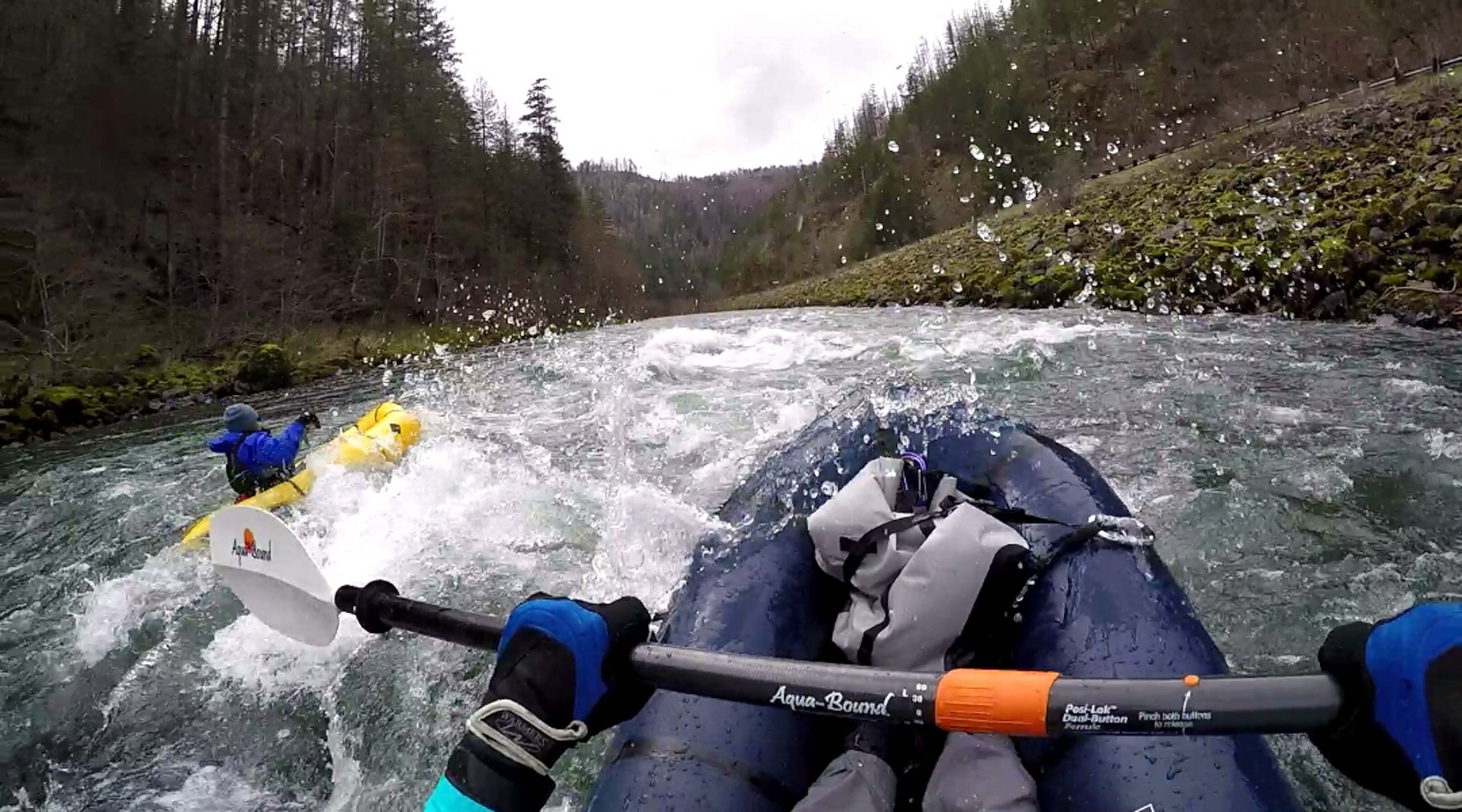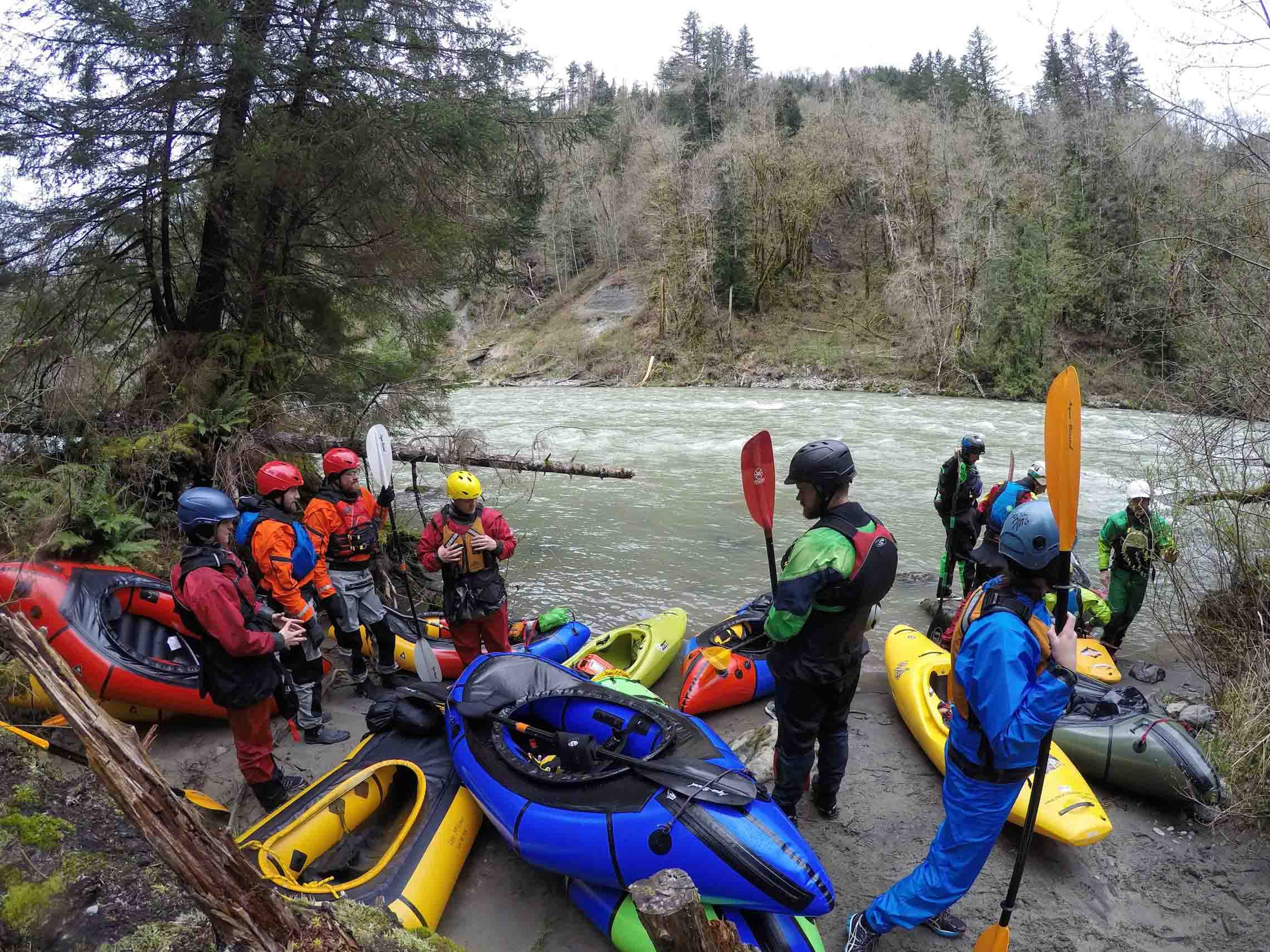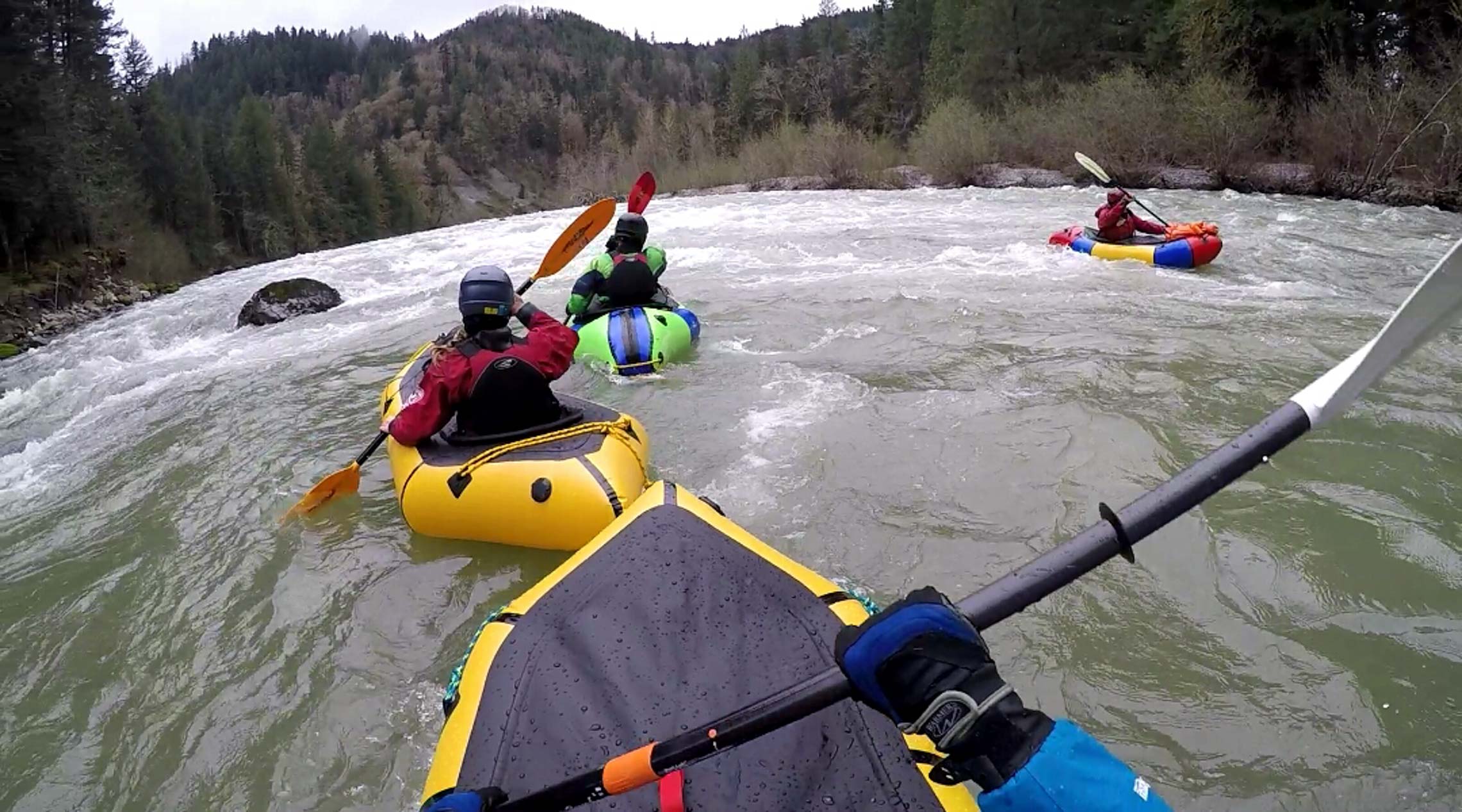For a long time, my packraft was more or less a tool with which to get away from people and to knock back a couple beers in the middle of a lake instead of the middle of a crowd of other hikers.

I’ve been packrafting for several years now in various forms. Before I even knew that it was called packrafting, I started bringing a tiny cheap inflatable raft and a paddle with me on hiking and backpacking trips when I discovered that it was an easy way to play in the water instead of just near the water. For a long time, my packraft was more or less a tool with which to get away from people and to knock back a couple beers in the middle of a lake instead of the middle of a crowd of other hikers. I got a more legit packraft a couple of years ago (the Kokopelli Hornet-lite) and it was a total game-changer discovering all the places I could get into with it, and how much stuff I could fit into this shockingly durable little boat that I could still cram into a backpack along with all of my other gear.

Along the way somewhere, I discovered that moving water was way more fun than lakes and, equipped with basically zero education about swiftwater, took to the (undammed and wildly variable) Sandy River near my house in Oregon. The packraft I have isn’t specifically made or recommended for hitting rapids but I’ve had a great time with it, even though it’s a fair bit of labor to pull off the river and empty it out every time I hit a big wave and swamp it.
As much fun as it’s been sitting in a pool of waist-deep water in my Hornet-lite paddling what’s essentially a full bathtub down the river, I’ve been super stoked to get into one of the whitewater-specific boats so I can feel the difference with something that’s meant to hit some hydraulics and get a little rowdier.
I’ve been safe running rivers thus far but as I start to push it a little more I’ve come to realize that my as yet accident-free packrafting experiences are due more to luck than to my knowledge base regarding swiftwater safety‚ and in my experience, it’s usually right about when you realize that you’ve been fortunate to have gotten this far unscathed that something goes to hell and life gives you a reality check. Instead of finding this out the hard way like I usually do, I decided to get some education and try out a more badass packraft at the same time. And that is how I found myself signed up for the Swiftwater Safety Institute’s Packraft Specific Rescue Course and sitting in a classroom at Triad River Tours on a rainy morning in North Bend, Washington feeling like a total kook with my rented drysuit, a kit pieced together out of random gear from other sports and a shiny new loaner Nirvana packraft from Kokopelli. I was just made of questions going into the class; once I started thinking about everything that could happen on a river I couldn’t stop. What happens if you fall out?
What happens if you get stuck on something? How do you get back in your boat in the water? What if you find yourself literally up a creek without a paddle?
HOW DO YOU PEE IN A DRYSUIT?
Fortunately, our instructor Zak Sears and his awesome Hungarian sidekicks Mate, Levi and Csabi were totally rad about my 7,539 assorted inquiries and fears. The class was ten people and four instructors; I was really happy about the ratio given how nervous I was about swimming in rapids while concurrently trying to juggle holding onto a paddle, getting back into a boat, not having a double chin in my GoPro footy and somehow not ending up three miles downstream or beached on a rock in the middle of the river. I figured it would probably take all four of them just to haul me back to dry land.
Much to my relief (both because I hadn’t finished my coffee yet and because it was 39 degrees out and raining hard enough that even us Northwest locals said “wow it’s really raining”) the first couple hours of the course were in the classroom. We went over gear, river features, terminology, where to find water data, hand signals, and safety, then moved out to the field to practice rope throws before taking to the water to practice it for real. By the time we got to the water to practice taking a bunch of swims and doing rope rescues, I was fully caffeinated and the temperature had risen to a balmy 42 so I was ready for a refreshing dip in the Snoqualmie, which was hovering at right around the same temp as the air.
Zak brought us out to scope the river and went over a few more things, then we all loaded up into our packrafts to practice our first technique, ferrying across the river to get to the spot we were going to work on swimming and rope throws. My river crossing strategy up to that point been something akin to a ‘pull out and pray’ situation, so it was really cool to learn about establishing a ferry angle and actually making it across the river to the spot you intended on landing in, with a lot less effort than just frantically paddling for the other side and hoping for the best.


Once we got across to the other side, we started working on defensive swimming, the main goal of which is to take a gnarly swim safely without smashing yourself on a rock or getting hung up on anything. I succeeded in only one of those objectives: on rare occasions I learn things the easy way but as I mentioned before, most often and for reasons still a mystery to me, I am a ‘the hard way learner’. So anyway, when you go for a swim, in order to assume the defensive swimming position you want to get onto your back with your feet downstream, keeping your hips and feet up so you don’t get snagged on or hit anything. Our trusty skipper Zak made sure we knew to try to keep a flat plane jumping into the water and when flipping over from your front to your back; however, I ditched that bit of knowledge when confronted with 4200cfs of moving river to the face for the first time and flopped into the water like a walrus. As it turns out, if a few thousand years of sloshing around in violent glacial runoff haven’t put a dent in those hunks of granite at the bottom of a river, you can rest assured that your hip bones won’t either.
Fortunately, the water was cold enough to act like an ice pack and I knew I had a shower beer waiting for me at the end of the day, so I wasn’t much worse for the wear. We continued on to practice throw rope rescue, which at first sounded like it would be pretty easy. But if you try to stand in moving water and throw a moving rope at a moving person, the chances of hitting your target the first try are pretty slim if you don’t practice it. That’s definitely one thing I’ll be doing a lot of at home to work out the kinks. And by kinks, I mean how my rope throw looks like someone brought out an emu to throw out the first pitch at the world series. After a few tries, we were all getting better!


After the longest shower I think I’ve ever clocked, a carne asada burrito and a good night’s sleep, I was stoked for day two of class. We worked on ferrying again, then on flipping our packrafts in the rapids and swimming back to an eddy with our boats and paddles. That part I was decent at but predictably, getting back into a packraft after capsizing was not my strongest skill. If you played back the part where I flopped onto the water like a walrus and smashed my lady parts into every chunk of granite in a two-foot radius but put it in reverse and in slow motion, I imagine that’s what it looked like. But I got back in eventually, and added that to the list of things I need to practice‚ a lot. After working on rescuing ourselves, we learned how to rescue a buddy as well and how to shepherd someone else’s packraft into an eddy if you can get to it before they do.

I think people take a different path to end up at packrafting than they would to get into whitewater kayaking or rafting, so even though the same desire for aquatic super fun time is there, the foundation for safety and technique and river knowledge might be a little lacking (or it certainly was in my case).
By the time our lunch break rolled around, I was harvesting the fruits of the next lesson that I inexplicably had to learn the hard way: after you run off to pee in the woods, make sure the zipper on your drysuit is closed COMPLETELY before jumping back in the water. On my last few pre-lunch swims, I was swimming in my drysuit as well as the river, and 43 degree water does not an agreeable bath make. Sitting in the car with the heat blasting while your underwear dries out on the rearview mirror and you stuff your sports bra full of handwarmer packets might not sound pleasant, but compared to floating down a river in a gore-tex bubble filled with ice water, it was glorious. After harvesting some dry baselayers out of my dirty clothes bag I was stoked to get back out for the rest of the afternoon when we were going to get out and practice a bunch of paddling techniques and run some sections of the river.
It was really important to learn all of the safety and rescue information and I feel much safer knowing it, but it was really fun to work on paddling and how to get around efficiently and send the river features. We worked on paddle strokes, hitting and exiting eddies, using our body positioning and turning. While the first part of the course focused more on what to do if you fall out of your packraft, the last part was more about how to stay in your boat and have a good time on the water.




All in all, this class was really awesome and I’d highly recommend it to anyone getting into packrafting who doesn’t already have a swiftwater background. I think people take a different path to end up at packrafting than they would to get into whitewater kayaking or rafting, so even though the same desire for aquatic super fun time is there, the foundation for safety and technique and river knowledge might be a little lacking (or it certainly was in my case). This was a great coupling of swiftwater safety and general paddling education and I was pretty floored by how much I learned in two days. I have a ton of stuff to practice now and I feel way more confident in the water.
I had to send the Nirvana packraft back to Kokopelli, but before I did I had to get in one more run on my home river. It was so much fun knowing a little more about how to navigate through the water and being less afraid about not having any idea what to do if I get booted out of my boat by a wave. I want to take more swiftwater safety and learn more about paddling techniques and reading the river, and I definitely want to pick up one of the whitewater-specific packrafts.
I love the Hornet-lite for lakes and slow-moving water but the difference in a whitewater packraft was definitely noticeable, especially after being able to run the exact same spot in both rafts. Having a little more volume, a rockered bow and stern and a spray skirt made a huge difference in the feel of the river and the amount of fun I had on it.
Happy travels, get sendy and stay safe out there!
NIRVANA SELF-BAILER
FROM $452
- 9.2lbs (Packraft + Inflatable Floor + Inflatable Seat Weight)
- Great Whitewater Handling Capability
- Drain Holes in the Floor System
- 2 Chambers